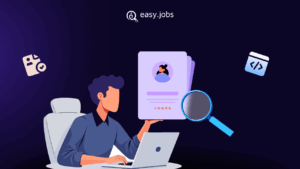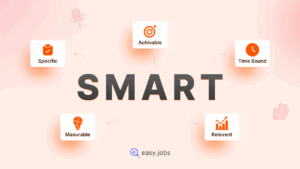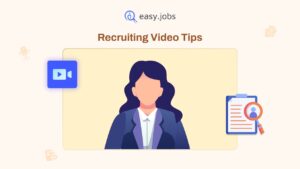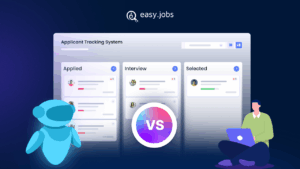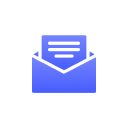Are you draining resources and need a solution to filter thousands of applicants in a hiring rush? A single poor hiring decision can cost a lot in terms of another round of hiring. Traditional methods like resume screening and unstructured interviews for candidate assessment are plagued by unconscious bias, making them a high-stakes gamble.
It is time to move from subjective guesswork to data-driven certainty. Let us discover how AI-powered candidate assessment tools can help you identify top performers and build a stronger team.
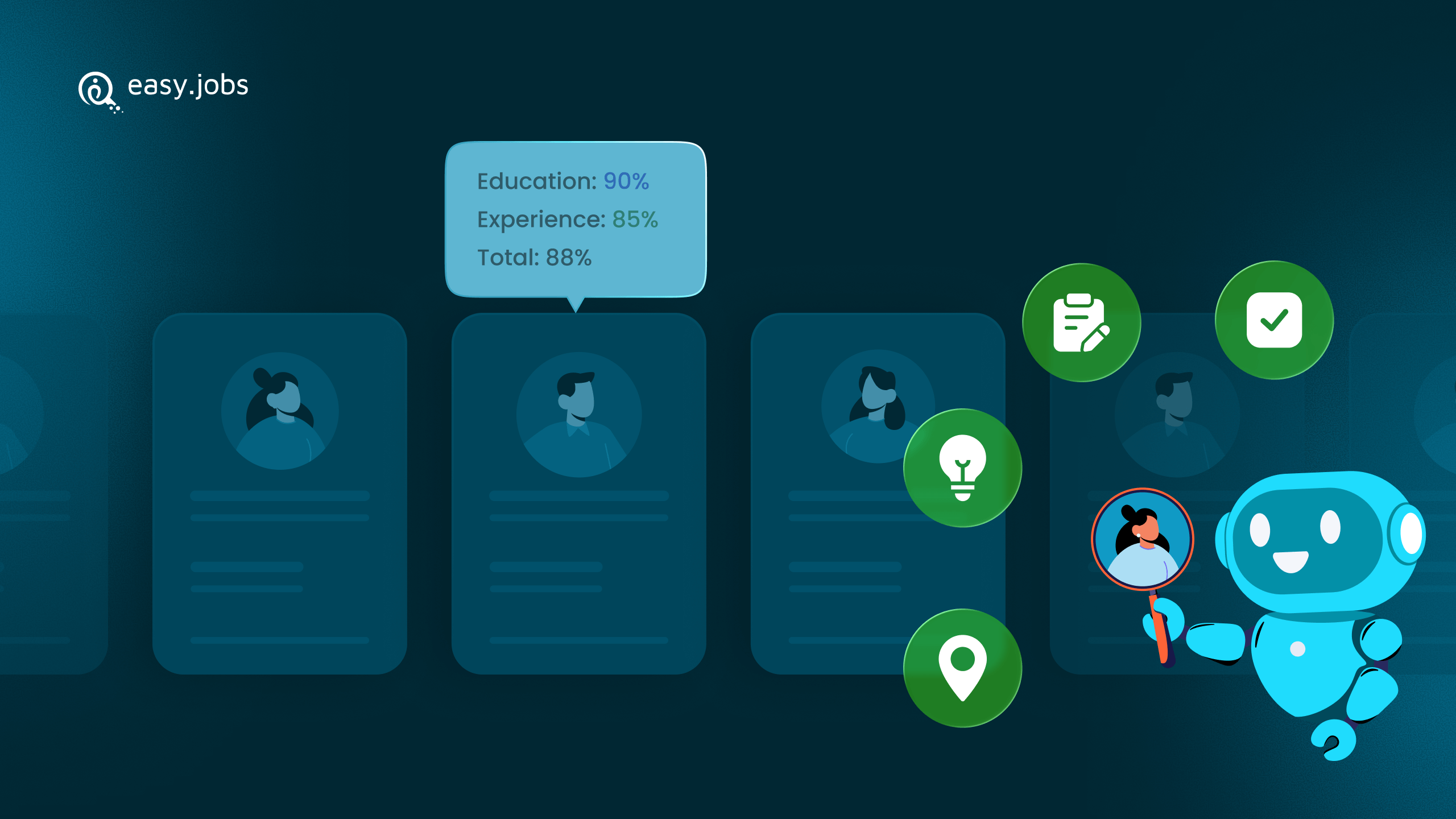
The High-Stakes Liability of Traditional Hiring
People often prefer to hire individuals who are similar to themselves. This tendency, known as Confirmation Bias, means that many seek out information that supports their existing beliefs. Almost half of hiring managers recognise that their workplace biases affect the candidates they choose. This shows that personal opinions play a significant role in hiring decisions, leading to potential risks.
Hiring based on resumes and unstructured interviews is a roll of the dice. It is not just an old method. It is a massive risk with serious financial and operational consequences. The data on this is pretty eye-opening.
And that is not the whole story. When you add up the domino effect on productivity, training and the team’s overall spirit, some industry insiders say the actual cost of a single bad hire can easily hit a lot more than finance, skilled resource shortage.
The financial hit is just the beginning. The real problem is the ripple effect that follows, capable of upsetting the balance of entire teams and departments. Let us break down some of those hidden costs:
- Productivity Drain: Instead of leading projects, managers are spending a huge chunk of their time, almost a whole day per week, dealing with underperformers. That is a massive amount of leadership and strategic thinking that gets sacrificed for basic supervision.
- Team Morale Collapse: A bad hire does not just fail on their own. They can drag the entire team down with them. This creates frustration and burnout, leading to a significant drop in team morale. And the worst part? This is the kind of toxic environment that makes your star performers, the people you need the most, start updating their resumes.
- Reputational Damage: The impact can easily extend beyond the company. It can damage relationships with clients and harm your company’s reputation in the industry. This makes it harder to attract top talent to work for you in the future.
Think of a bad hire as more than just a single expense. It is a persistent drain on your company. It creates a domino effect: you pay to replace the bad hire and then you pay again to replace the top performers who left because of the disruption. This turns a simple mistake into a recurring problem that chips away at your company’s foundation: its people.
At the heart of this issue is a simple but powerful flaw in traditional hiring: human bias. Relying on subjective feelings about a resume or an unstructured interview is a recipe for unfair decisions. The evidence is stark: a resume from a top-tier university is more likely to get a call than an identical resume from a less prestigious one. Hiring managers often fall prey to this way of thinking.
The tendency to favour people who are similar to themselves and Confirmation Bias, the tendency to seek out information that confirms their initial impressions. Almost one out of two hiring managers admits that biased opinions impact their final candidate choice.
It is clear that subjectivity is the primary driver of hiring risk. This establishes a direct causal link: subjective evaluation leads to bias, bias leads to bad hires and bad hires lead to massive financial and cultural losses. To de-risk the hiring process, data-driven objectivity is no longer a luxury; it is a business necessity.
Build Smarter Hiring Process: Your Guide to Modern Candidate Assessment
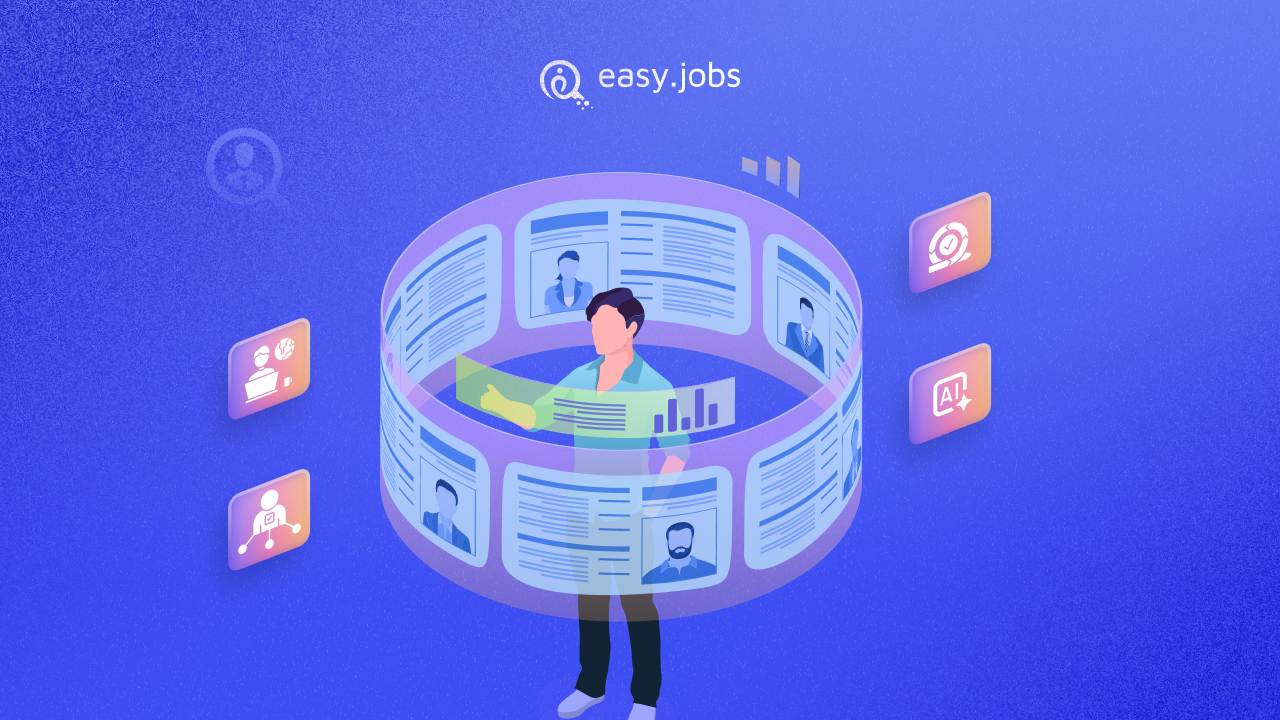
To prevent costly hiring mistakes, organizations must replace subjective evaluations with a data-driven assessment. This modern approach objectively evaluates an applicant’s core competencies, not just their resume, to accurately predict future job performance and ensure a proper fit for the role.
A strong assessment strategy uses various tools, each aimed at evaluating a specific aspect of a candidate’s potential. By integrating these tools, hiring teams can create a comprehensive, multi-dimensional profile of each applicant.
The Role of Pre-employment Testing
By replacing subjective impressions with objective data, these assessments provide a structured and reliable way to predict a candidate’s on-the-job success. Key tools in the modern assessment toolkit include:
- Cognitive Ability Tests: These assessments measure critical thinking, logical reasoning, problem-solving skills, and a candidate’s capacity to learn new information. They are consistently shown to be among the strongest predictors of job performance, particularly for roles that require complex decision-making.
- Skills Tests (Hard & Soft): These directly measure a candidate’s proficiency in job-critical tasks. Hard skills tests might include coding challenges for a developer or a financial modeling exercise for an analyst. Soft skills tests evaluate interpersonal competencies like communication, teamwork, and adaptability, which are crucial for success in virtually any role.
- Personality & Behavioral Assessments: These tools provide valuable insights into a candidate’s work style, motivations, and interpersonal tendencies. Using established frameworks like the Big Five model, they help determine how well a candidate might fit within a specific team and the broader company culture.
- Situational Judgment Tests (SJTs): SJTs present candidates with realistic, hypothetical work scenarios and ask them to choose the most effective course of action. This method is excellent for evaluating practical problem-solving skills and decision-making abilities in a job-relevant context.
- Job Simulations & Work Samples: Often considered the most direct form of assessment, these require a candidate to perform a task that is a core part of the job. This could be writing a piece of code, designing a marketing graphic, or conducting a mock sales call, offering a tangible preview of their on-the-job performance.
The following table provides a practical guide for selecting the right tool for your hiring needs.
| Tool Type | What It Measures | Best For (Use Case) | Example |
| Cognitive Ability Test | Logical reasoning, problem-solving, learning agility | Roles requiring complex thinking (e.g., Analysts, Developers) | A test with logic puzzles and numerical reasoning questions. |
| Technical Skills Test | Proficiency in specific hard skills | Technical roles (e.g., Software Engineer, Accountant) | A coding challenge or a test on specific accounting principles. |
| Soft Skills Assessment | Communication, teamwork, adaptability | Customer-facing and leadership roles | A questionnaire asking how a candidate would handle a difficult team dynamic. |
| Personality Test | Work style, motivation, interpersonal tendencies | Determining fit with team dynamics and company culture | A Big Five assessment measuring conscientiousness and agreeableness. |
| Job Simulation | Ability to perform core job tasks in a realistic setting | Highly practical roles (e.g., Graphic Designer, Sales Rep) | Asking a designer to create a sample graphic or a salesperson to conduct a mock sales call. |
Adopting a structured assessment process yields significant, tangible business outcomes. By providing objective, standardized data, these tools ensure that every candidate is evaluated on merit, drastically reducing the influence of unconscious bias and fostering a more diverse and inclusive workforce culture.
This data-driven approach leads to more informed hiring decisions, which in turn boosts employee retention, as individuals who are a better fit for their role and the company culture report higher job satisfaction. Ultimately, hiring employees who are well-suited for their positions enhances overall productivity and contributes more effectively to achieving organizational goals.
The AI Advantage: How easy.jobs Delivers the Future of Assessment, Today
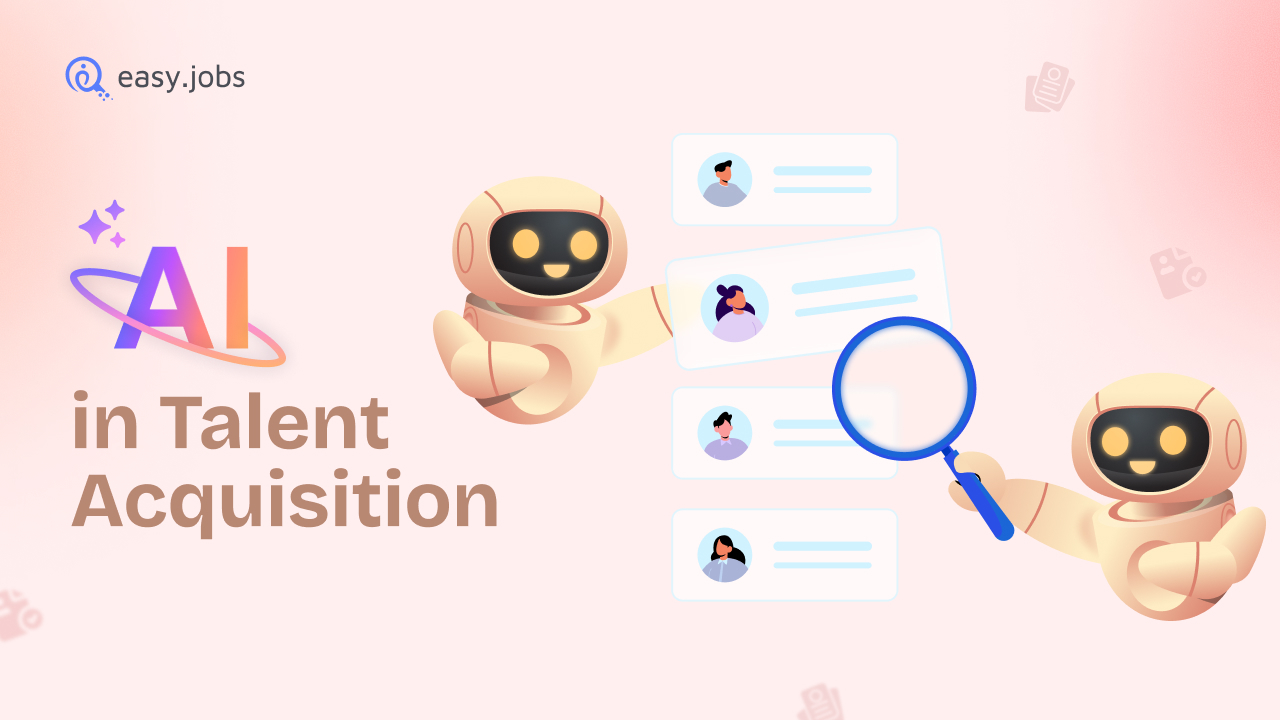
While structured assessments represent a monumental leap beyond traditional hiring, the next evolution is already here: AI-powered assessment. Artificial intelligence does not just automate the process. It supercharges it with predictive power and deeper insights.
AI-driven platforms can analyze complex response patterns in real-time, adapt assessments on the fly and use predictive analytics to forecast a candidate’s long-term potential for success and retention.
This marks a fundamental shift from reactive filtering, screening out unqualified candidates, to proactive prediction: identifying individuals who are most likely to become top performers and stay with the company long-term.
AI algorithms also play a crucial role in actively mitigating bias by identifying and flagging subtle patterns that human reviewers might miss, ensuring a truly fair and transparent evaluation process.
For companies looking to build a resilient, high-performing, and loyal workforce, this AI-driven strategic advantage is transformative. The easy.jobs platform makes this advanced technology accessible, intuitive and seamlessly integrated into your hiring workflow.
A Guide to Flawless Candidate Evaluation with easy.jobs
The easy.jobs platform is designed to be both powerful and user-friendly, allowing any hiring team to implement a sophisticated assessment strategy. Here is a practical hiring guide to getting started.
Step 1: Create Your Custom Assessment in Minutes
Creating a tailored assessment is straightforward. From the easy.jobs dashboard, navigate to the Evaluation tab and select Assessment. Here, you can click the Create Assessment button to begin.
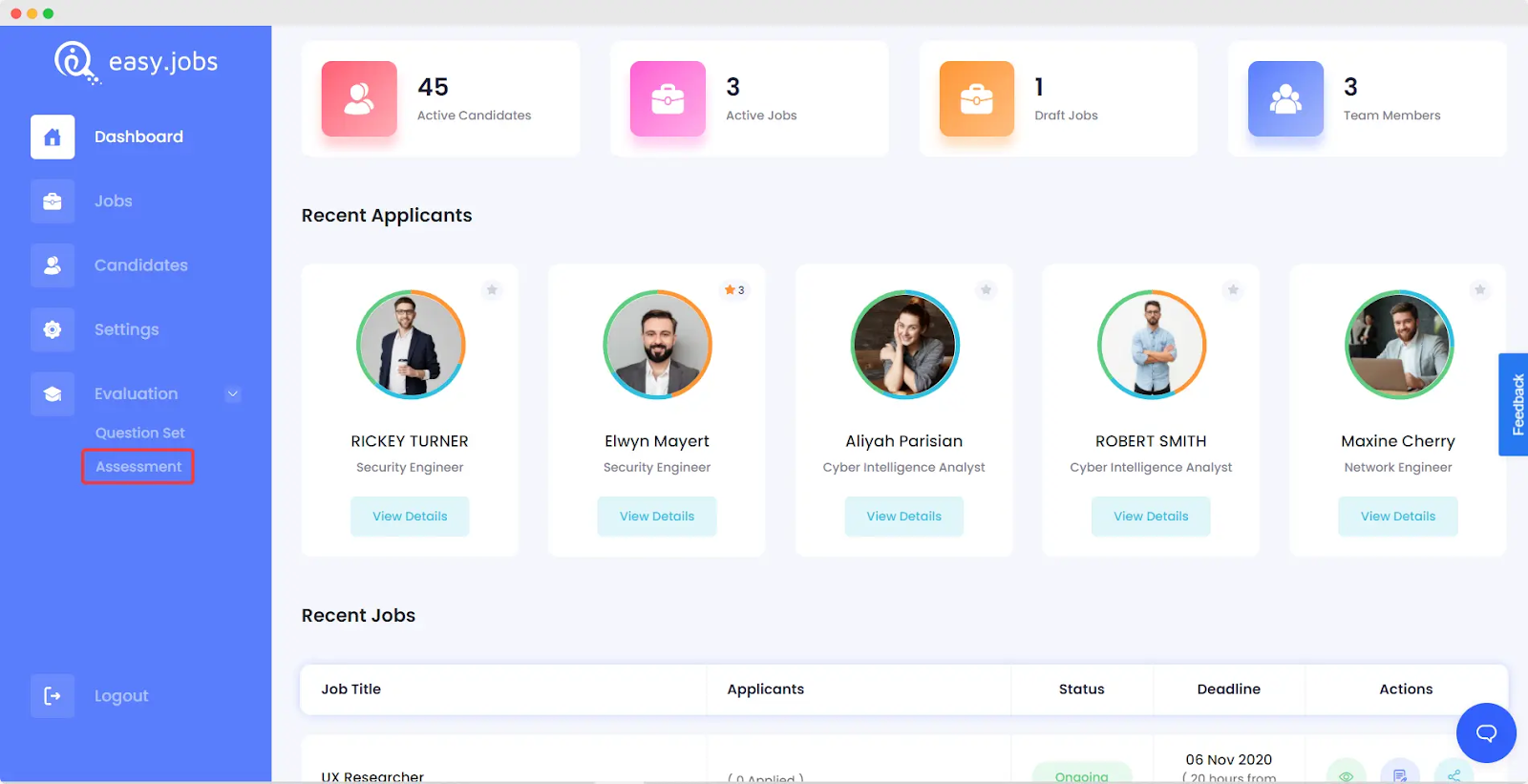
The platform guides you through naming the assessment, setting a time duration and assigning marks per question. You can easily add multiple-choice questions and, crucially, mark the correct answer before saving.
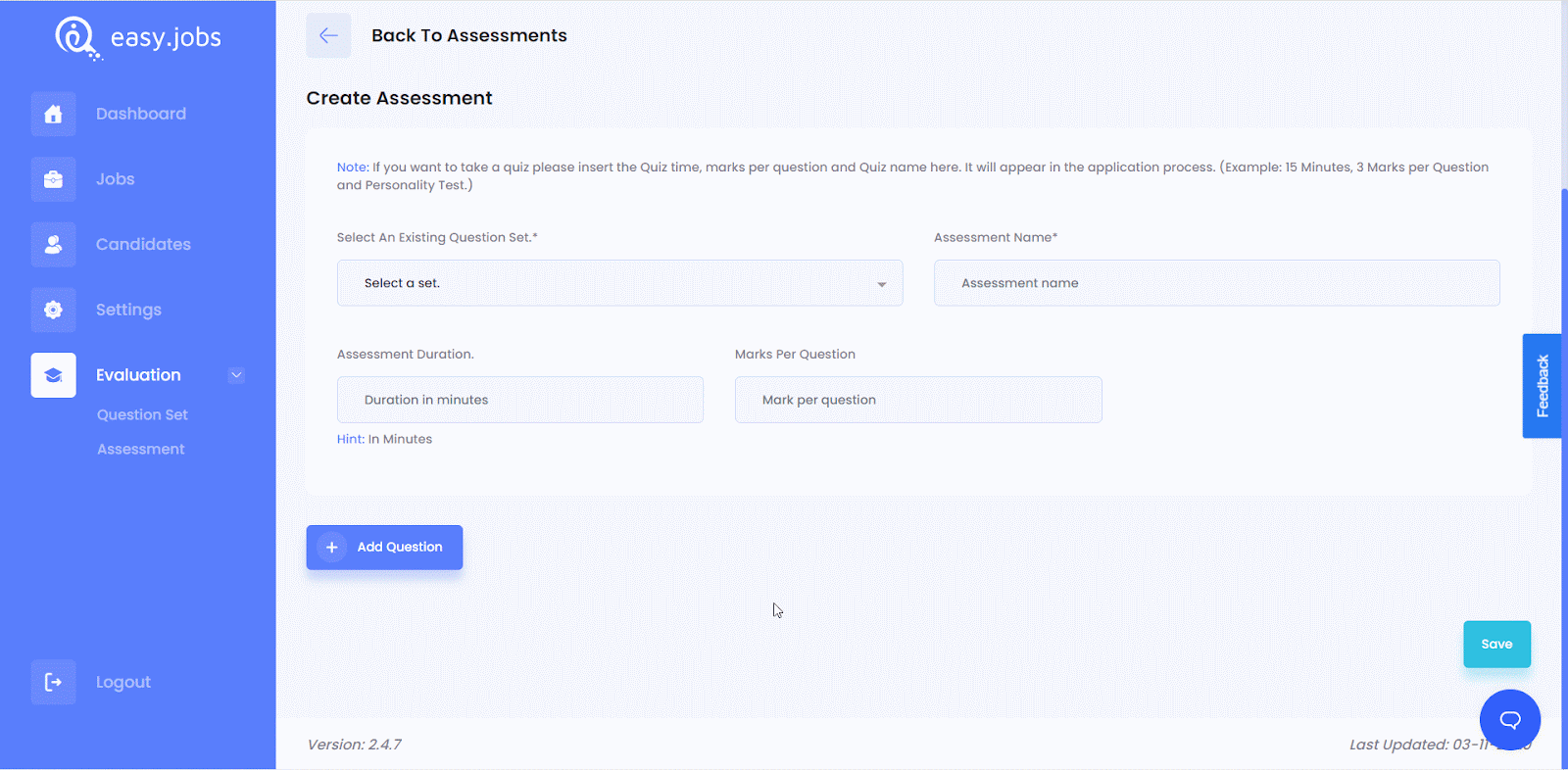
This simple process allows you to build a relevant, role-specific test in just a few minutes. For a complete walkthrough with visuals, we recommend you follow this documentation for a step-by-step guide from easy.jobs.
Step 2: Assign Assessments with Precision
Once your assessment is ready, assigning it is just as simple. From the Candidates tab, you can select one or multiple candidates and use the Assign Assessment function. This is where the power of the easy.jobs ecosystem becomes clear.
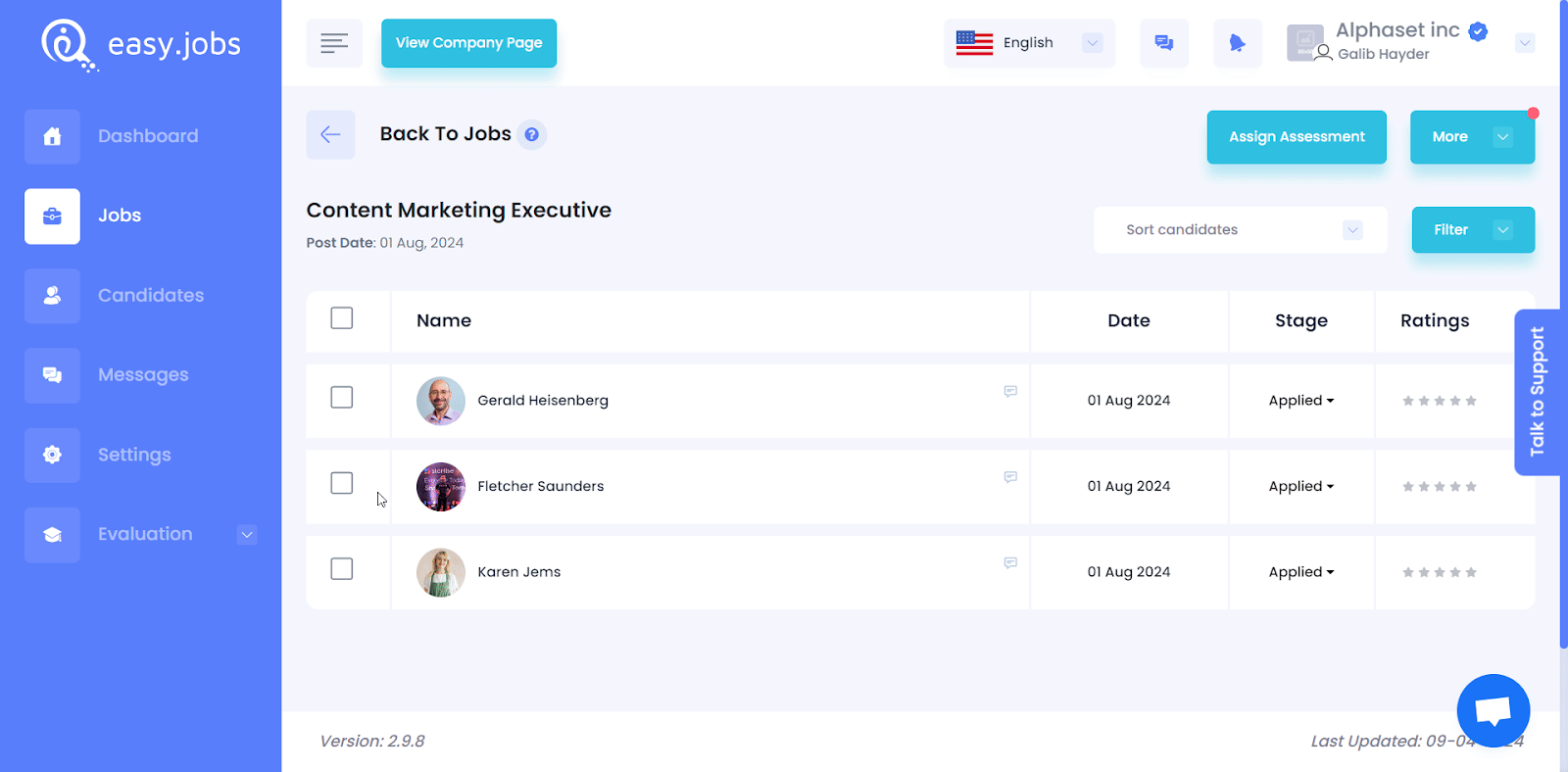
A modern hiring platform cannot be a closed system; it must serve as a central hub that connects to best-in-class tools for specialized needs. With easy.jobs, you can assign your custom-built tests or leverage powerful integrations with industry-leading platforms like HackerRank for technical coding challenges or Testlify for a vast library of skills assessments.
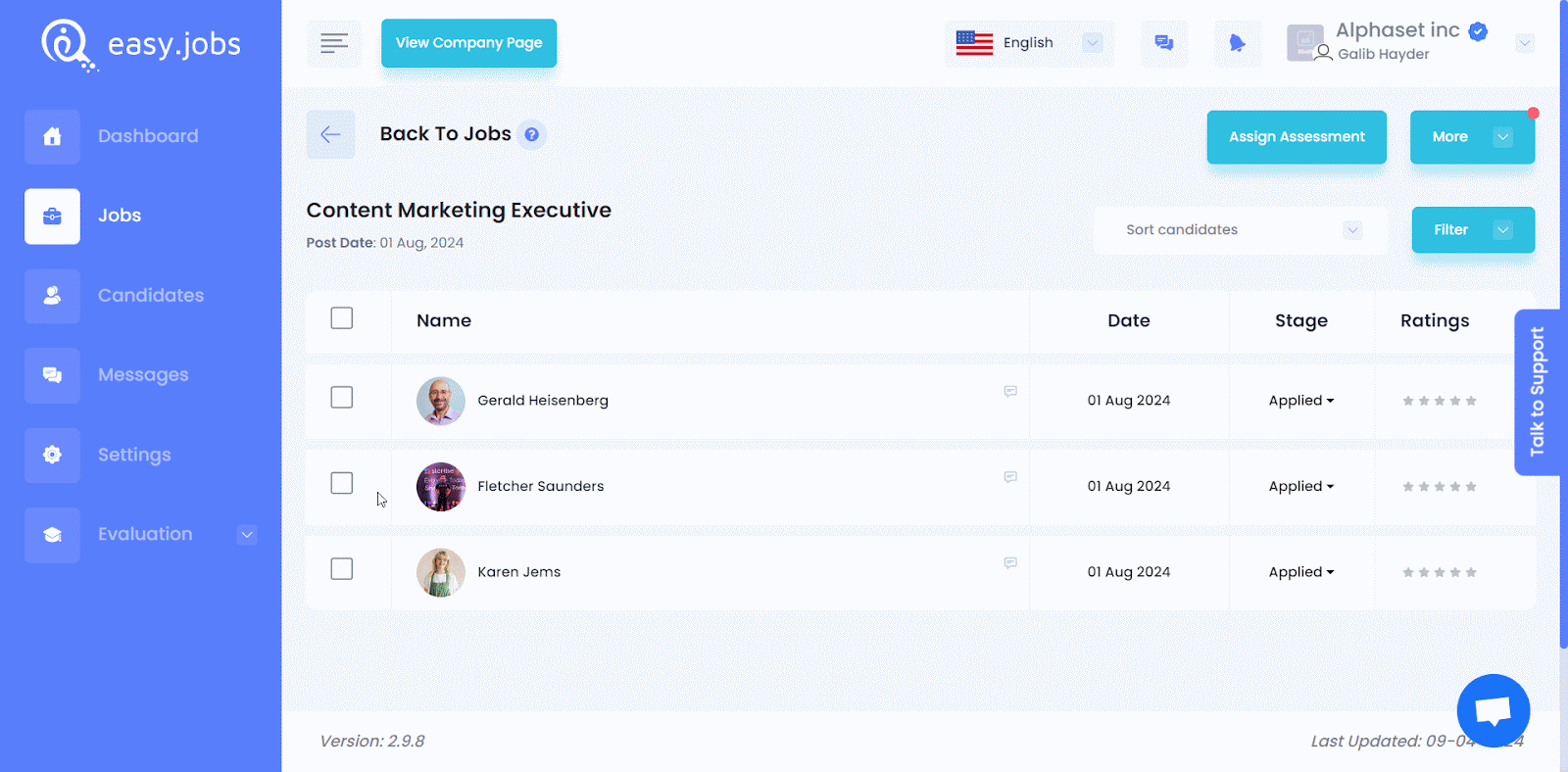
This flexibility ensures you have the right tool for every role, from entry-level to highly specialized. The platform also provides full control over the process, allowing you to set and even modify the assessment expiry date for candidates as needed.
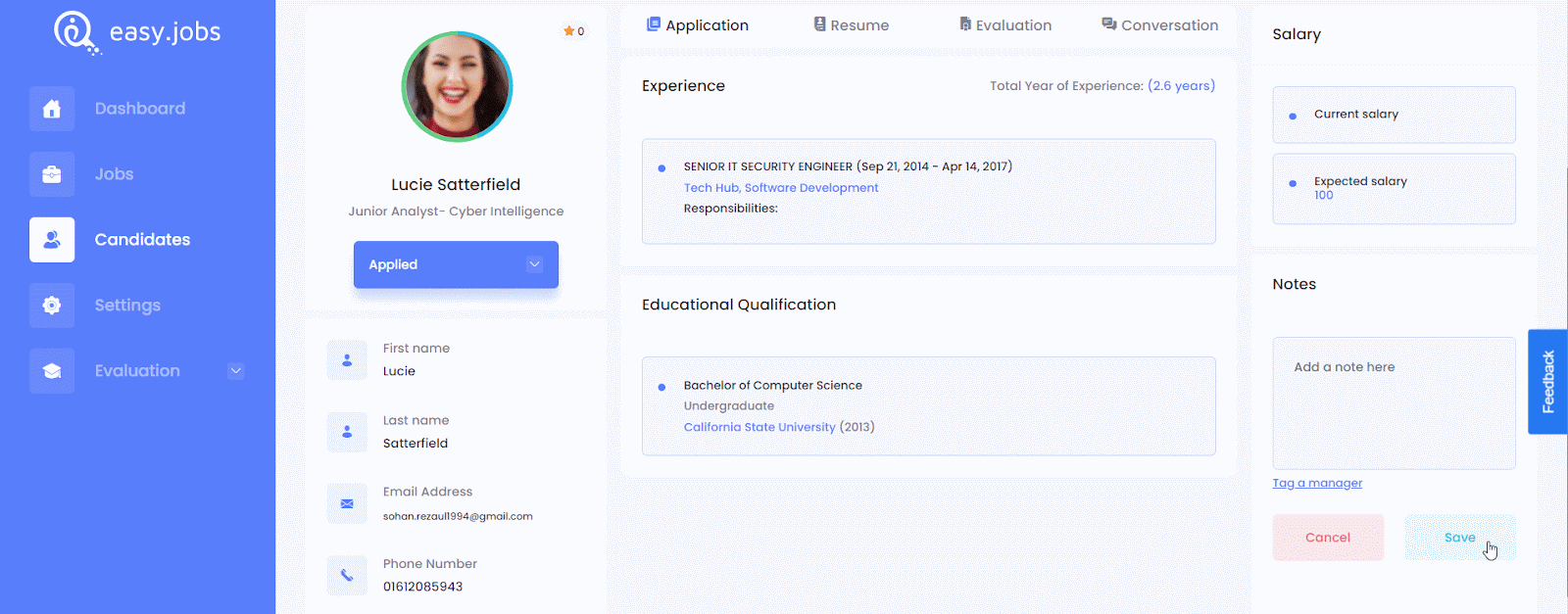
Step 3: From Scores to Insights: Make Data-Driven Decisions
After a candidate completes an assessment, easy.jobs transforms raw data into actionable insights. To view the results, navigate to the candidate’s profile, click on the Evaluation tab, and select Assessment.
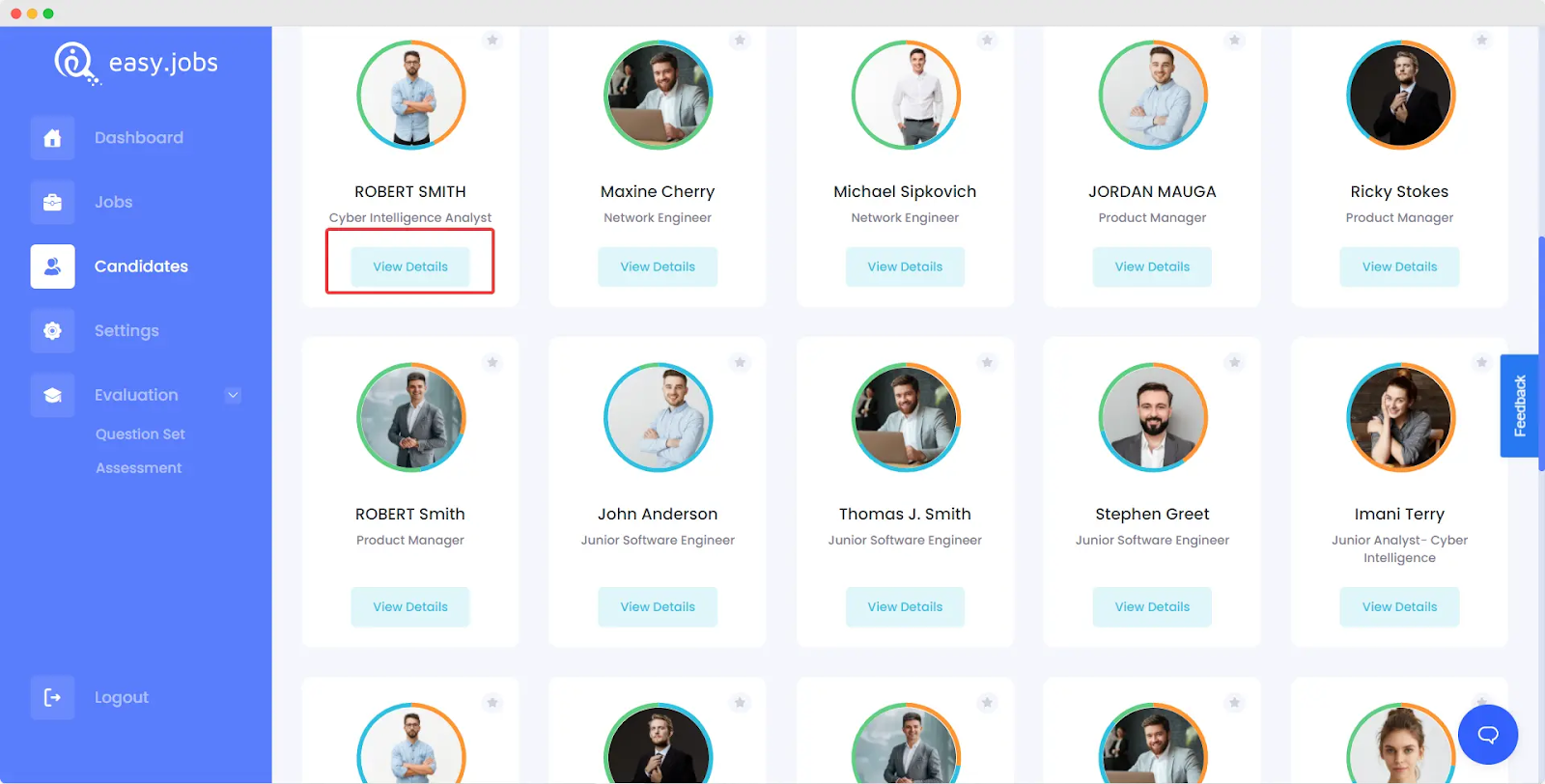
You will see not only the final score but also a detailed breakdown of which questions were answered correctly. This allows you to move beyond a simple pass/fail metric and understand a candidate’s specific strengths and areas for development, enabling truly informed and defensible hiring decisions.
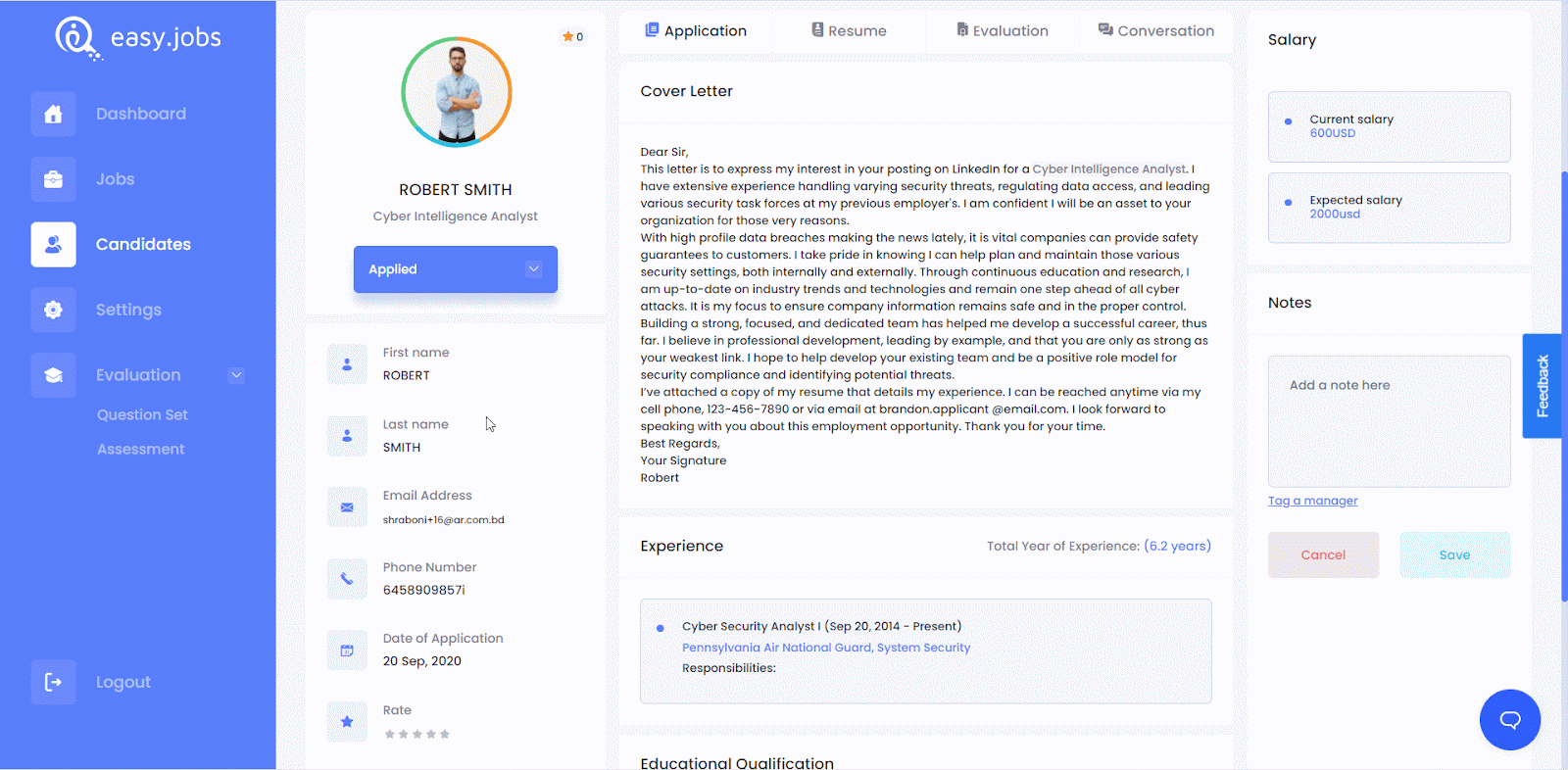
For a full walkthrough, we recommend you follow this documentation for a step-by-step guide from easy.jobs.
Master Your Hiring Strategy: Expert Tips & Your Next Step
Implementing an assessment tool is the first step; mastering a data-driven hiring strategy is what creates a lasting competitive advantage. Effective candidate assessment is not just about the technology but also about the process and philosophy that surround it. It requires organizational alignment, a commitment to fairness, and a focus on continuous improvement.
5 Essential Tips for Effective Candidate Evaluation
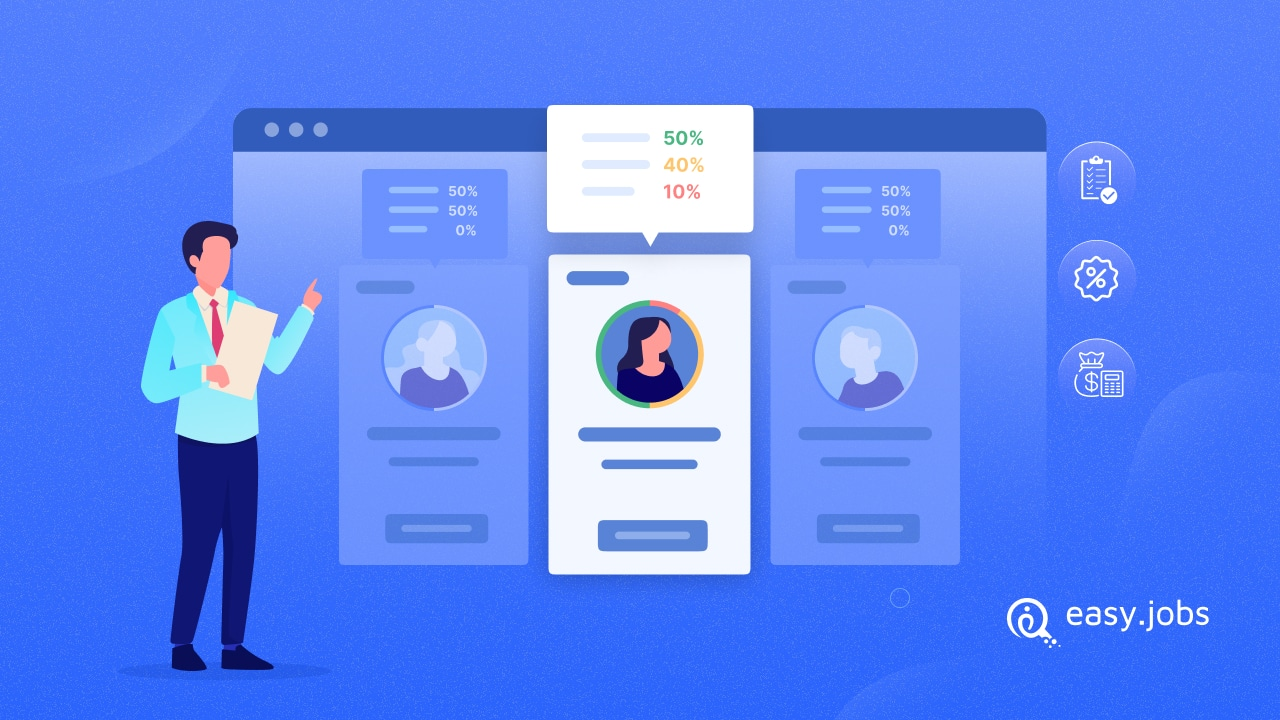
To maximize the impact of your assessment program, consider these essential best practices:
- Define Success Before You Start: To hire effectively, first create a clear, objective profile for the ideal candidate. Before reviewing applications, outline specific hard and soft skills, avoiding vague, biased terms. This provides a measurable benchmark to guide your decision-making process.
- Use a Multi-Measure Approach: No single test can provide a complete picture of a candidate. The most predictive and reliable assessments use a combination of tools to create a holistic view. For many roles, a blend of cognitive ability, skills and personality tests will offer a far more accurate prediction of future performance than any single measure alone.
- Test Early, Interview Later: To create the most efficient hiring funnel, use assessments at the beginning of the process. Administering tests to all applicants allows you to quickly and objectively screen out those who do not meet the minimum requirements, ensuring that you only invest valuable interview time with the most qualified candidates.
- Prioritize the Candidate Experience: Top talent has options. A lengthy, confusing, or irrelevant assessment process can deter your ideal candidates. Keep tests engaging, clearly relevant to the job, and respectful of the candidate’s time—aim for a total testing time of 40 minutes or less if possible. Always communicate the purpose and what to expect from the assessment to maintain transparency and candidate buy-in.
- Train Your Team: An assessment tool is only as effective as the people who use it. It is critical to train recruiters and hiring managers on how to interpret test results objectively and integrate them into a broader, holistic evaluation. This ensures consistency and prevents over-reliance on a single data point, fostering confidence in the process across the organization.
Decode True Ability Beyond Resumes & Unbeatable Insights
The scenario of talent acquisition has changed. Traditional hiring, with its reliance on subjective methods, is a costly and unpredictable gamble plagued by unconscious bias. A modern, data-driven approach to candidate assessment de-risks this process, leading to better hires, higher retention and a more diverse workforce.
AI-powered platforms like easy.jobs represent the pinnacle of this evolution, transforming assessment from a simple filter into a powerful, predictive engine for building a future-proof organization.
Enjoyed this deep dive? Subscribe to our blog for more actionable guides on transforming your hiring process, from optimizing candidate assessment to boosting your employer brand. Join our Facebook community of recruiters who are building the workplaces of tomorrow.

